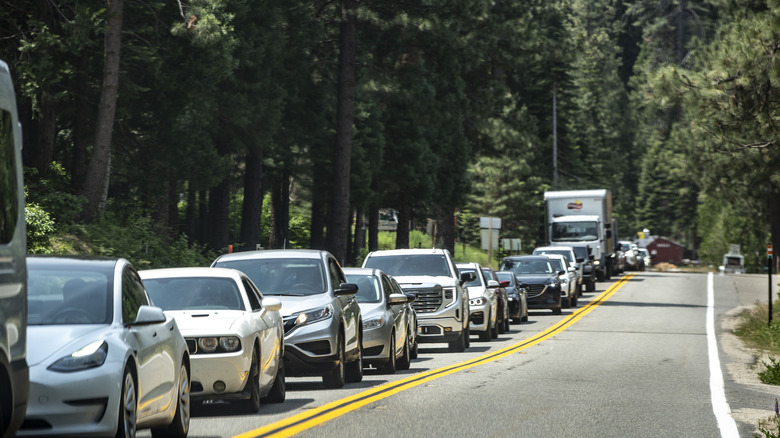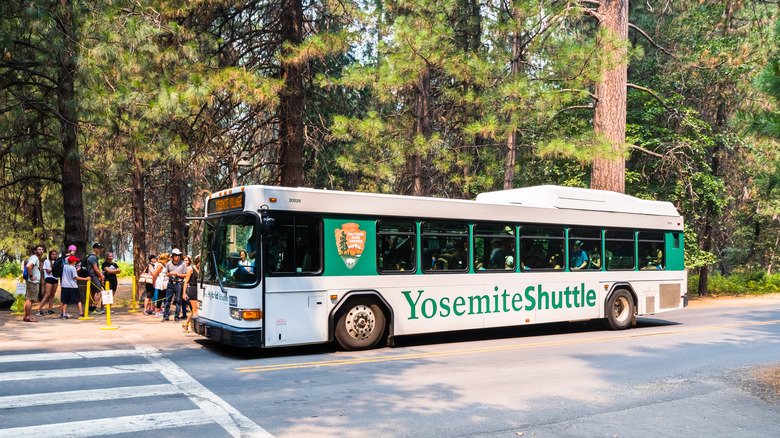Yosemite National Park Has Finally Clarified Its Confusing Reservation System
Yosemite National Park spans nearly 1,200 square miles in California's Sierra Nevada range, is a natural masterpiece that draws millions of visitors annually. Its iconic granite monoliths, like the 3,000-foot El Capitan, thundering waterfalls, sprawling meadows, and ancient sequoias create a landscape of unparalleled beauty. Hikers explore trails leading to roaring waterfalls and the witnessing of magnificent valley views, while climbers tackle world-class routes on El Capitan's epic granite face. This UNESCO World Heritage Site, which was shaped by glaciers and rivers, promises to offer vast wilderness and tranquility. Yet, its popularity brings challenges large enough to provide reasons to avoid camping in the park in 2025.
In 2024, Yosemite saw about 4.2 million visitors, with about 75% of them arriving between May and October, peaking in July and August with over 500,000 visitors each month. Yosemite Valley, a 1-mile-wide, 7-mile-long canyon, becomes a logjam of visitors, with traffic jams, overflowing parking lots, and crowded trails. The surge, up 30% since 2000, prompted the park to pilot a reservation system in 2020, which they've been tweaking each year since. After years of refining, the National Park Service introduced a new reservation system for summer 2025 to manage congestion while preserving access. From June 15 through August 15, plus Memorial and Labor Day weekends, drivers entering between 6 a.m. and 2 p.m. need reservations to balance the visitor experience with the park's ecological needs.
Navigating the 2025 reservation system
The 2025 reservation system ideally refines previous efforts to ease Yosemite's summer gridlock. Unlike 2024's rules, which required reservations from 5 a.m. to 4 p.m. daily between Memorial Day and Labor Day, the new system applies from June 15 to August 15, plus holiday weekends, and only between the hours of 6 a.m. and 2 p.m. Reservations launched on May 6, 2025, at 8 a.m. PST on Recreation.gov, with additional reservation slots released seven days in advance. Demand is intense, and reservations often sell out in minutes if not immediately, requiring visitors to log into their accounts early. Each reservation is valid for three consecutive days (e.g., a Friday booking covers Friday, Saturday, and Sunday), but users cannot book another slot during that period. Exemptions apply for those with in-park camping, lodging, Half Dome permits, or wilderness permits.
Visitors can enter the park without reservations before 6 a.m. or after 2 p.m. Arriving just before 2 p.m. will not be tolerated and risks earning a citation for blocking traffic, as there is no suitable place to park and wait near entrance stations. Phone bookings are available as well for those without internet or computer access. The system, based on parking capacity, roadway limits, and entrance data, aims to spread visitation out evenly for better visitor experiences and to safeguard the ecology of the park. Despite fewer required reservation days, entrance delays persist, so arriving before 8 a.m. is highly advised. This "scaled-back" approach to reservations, criticized by the National Parks Conservation Association, reduces the hours for which visitors need reservations, while visitor numbers have only gone up. Potentially brought on by the cuts in funding and staff.
Tips for a smoother visit to Yosemite National Park
Even with reservations, Yosemite's peak season demands a strategy to dodge crowds. The busiest hours remain 9 a.m. to 5 p.m., especially on Saturdays and holidays. To beat the rush, enter before 6 a.m. for quiet trails or after 5 p.m. for calmer evenings. Weekdays see the least amount of congestion as opposed to weekends. Parking in Yosemite Valley is notoriously scarce, so park once and try not to drive again until you leave. Instead, use the free Valleywide Shuttle or East Valley Shuttle, which operate from 7 a.m. to 10 p.m., departing about every eight to 22 minutes, every day of the week. Easily hop between trailheads, campgrounds, and lodges on this eco-friendly transportation alternative. Likewise, take the Yosemite Area Regional Transportation System (YARTS) for stress-free, eco-friendly entry to the park. YARTS runs from various areas outside of the park, in and around the park. Driving between sites in the park often leads to frustration with traffic and lost parking spots, so try to stay put and use public transport or bring your own bike to bike around the park.
For unique experiences, book a fee-based bus tour such as the Glacier Point tour or the Yosemite Valley Floor tour, which provide an opportunity to explore some of the most beautiful places in Yosemite National Park with the knowledge of an expert guide, all without the hassle of navigating the congested traffic ways yourself. Sit back and count the waterfalls and climbers, or spot the wildlife with ease. If you prefer to drive, try exploring one of the park's less-trafficked areas, like Tuolumne Meadows, for a more serene experience than Yosemite Valley's bustle.


